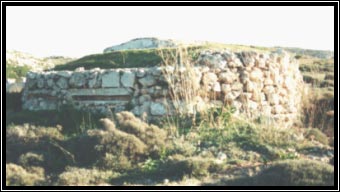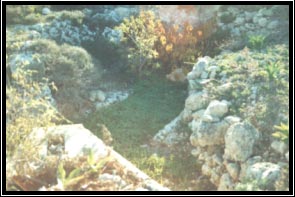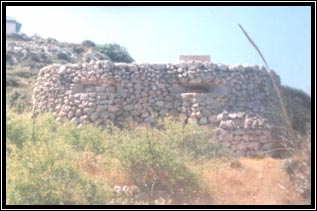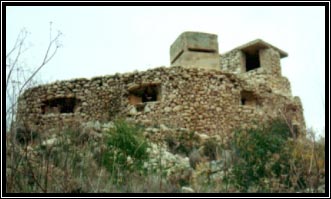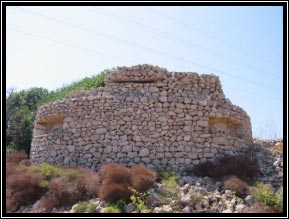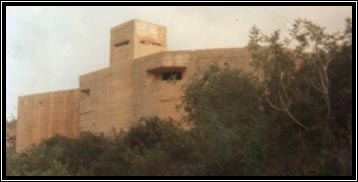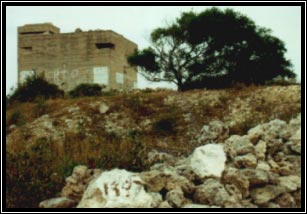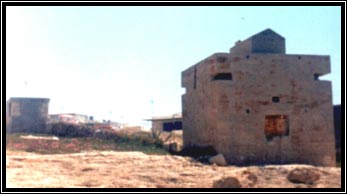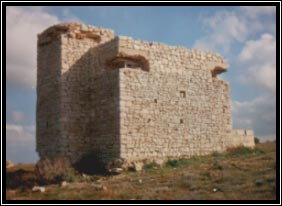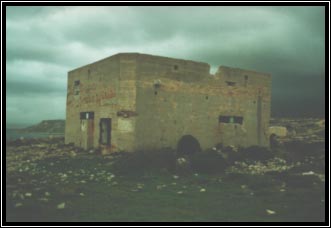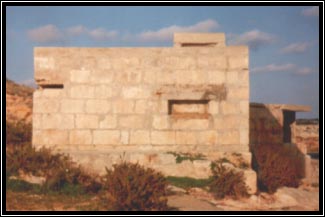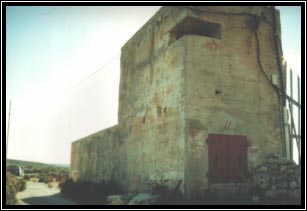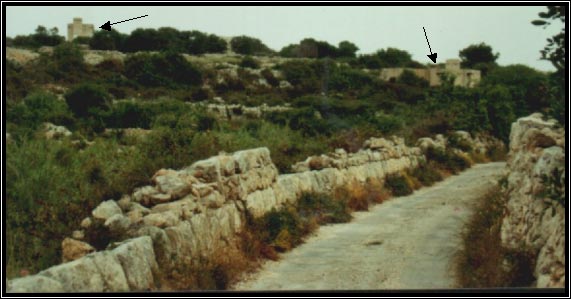

Pillboxes were the last type of fortification to be built in Mellieħa and Malta. These types of military structures were constructed in nearly every part of the Island. It seems that the largest number of pillboxes was built in Mellieħa and fortunately the largest number of them survived to this day. The rise of Fascist Italy with its expansionist policies forced the British to reconsider the Island’s defensive situation.1 The process of building pillboxes in Mellieħa, like other parts of Malta, was
set in motion by the threat of invasion caused by the Abyssinian Crises in 1935. However, the real concentrated scheme of pillbox building began in August 1938.2 The first type of defences consisted of trenches dug out and fitted with one or two emplacements for the Vickers machine-guns. Accompanying these positions were small stone-clad concrete observation posts. A number of these positions were built on Mellieħa Ridge, and it appears that it was these field defences which were first constructed during the Abyssinian Crises Military exercises were carried out from 1935 onwards in preparation for an Italian invasion.3 The first building programme of pillboxes occurred in 1935, when Italy invaded Abyssinia, and according to a map shown in Stephen Spiteri’s book British military architecture in Malta, in 1938-39, 53 pillboxes were built in Malta, 27 out of them in Mellieħa alone.4 Another map in the same book, showing the existing pillboxes and new built ones from 1939 onwards, indicates that there were around 130 pillboxes in Malta, 46 were in the district of Mellieħa alone.5 The first type of pillboxes erected were those which were distinguished by their neat and elaborate camouflage of rubble stone cladding.6
Meanwhile, as a result of the growing threat of war and invasion, after the occupation of the whole of Czechoslovakia in March 1939,6 in the same year a new type of pillbox, more box-like in shape, began to appear. The second group of pillboxes, of which there were three basic types,7 retained their bare concrete finish. As the pillboxes became more box-like in form, the only practical form of camouflage was to disguise them as rural building and farm houses. Camouflage was mainly applied in the form of paint work.8 Pillboxes continued to be built till the siege was lifted in mid 1942.9 The pillboxes were not scattered for nothing. In fact they formed part of a number of stop lines in order to stop an enemy invasion and penetration in the defences of the island.10 It seems that in Mellieha there were mainly two stop lines. But in at least two cases there were three stop lines.
The first case is the third stop line stretching from the Wied tal-Ħanżira to the left roadside on the road leading to Mellieħa Bay from the village. The three stop lines included the fist one from Ċirkewwa to Armier; the second one from Ponta tal-Qammieh to id-Dahar and the third one the above mentioned. It served also as a second stop line after the first one in Mellieħa bay. The second third stop line seems to be built on the natural fault of Għajn Żejtuna valley. Until much more information I am considering that the pillbox that was situated opposite the cross Keyes formed part of the third stop line. Each stop line was to report to the one in its rear the movements and approximate number of enemy soldiers and vehicles, tanks and artillery. Each stop line was built on natural obstacles, beginning from the coastline and falling back inland following the geography of the land. All the pillboxes were given a code number consisting mainly of letters and numbers.11 |
|||||||||||||||||||
|
|||||||||||||||||||
|
|
|||||||||||||||||||
References: 1 Stephen C. Spiteri, The British Military Architecture in Malta, Malta, 1996, p 496. 2 Ibid, p 503. 3 Ibid, p 509. 4 Ibid, p 515. 5 Ibid, p 538. 6 Ibid, p 513. 7 E. Jablonski, A pictorial history of the World War II years, United States, 1977, p 21. 8 Ibid, p 523. 9 Ibid, p 526. 10 Ibid, p 513. 11 Ibid, p 535. 12 Ibid. Article researched and written by Charles Debono B.A. (Hons) History. |
|||||||||||||||||||
Maltaserv Bannerlink
